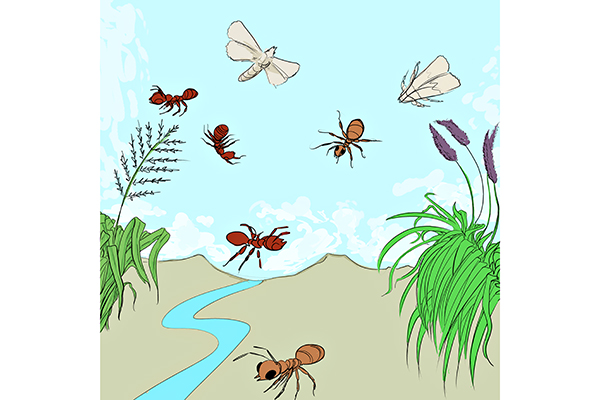Researchers at UT Brackenridge Field Laboratory recently received a $6 million grant from the Lee and Ramona Bass Foundation to find ways to sustainably control invasive species in Texas.
“Sustainable control means something where you don’t have to go out and repeatedly apply pesticides or herbicides, but you can bring the invasive species into balance with the rest of the ecosystem,” said Ed LeBrun, an integrative biology research scientist.
The research targets five invasive species that are harming the native Texan landscape: imported fire ants, tawny crazy ants, moth larvae that feed on native cacti and African guinea grass and buffel grass.
The project attempts to naturalize non-native pest insects and plants, integrative biology professor Larry Gilbert said.
“Eradication is not possible, so the aim is to figure out ways of making them more compatible with our system,” Gilbert said.
Biological control can involve going to the native home of an invasive species to find their parasites and pathogens, and understanding how the species’ population is controlled there, LeBrun said.
After a natural enemy of the invasive species is identified, it is brought to the lab to be tested for specificity and to demonstrate it won’t have unintended consequences for native plants or animals, LeBrun said.
One of the primary goals of the grant is to bring forward the guinea grass as a new emerging threat, said Rob Plowes, an integrative biology research scientist.
“The two species of African grasses were originally introduced for cattle pastures but have spread into the natural brush and have significant consequences, including changing the fire cycle and causing a major loss of biodiversity,” Plowes said.
Plowes said their operations expand to international work as well, to better understand the home ranges of the invasive species.
“The grasses come from Africa, and we work with a collaborator in Kenya where these grasses come from,” Plowes said. “But the two ants and the moth come from Argentina, and we were working with a collaborator in Argentina on this.”
Gilbert said when he became director of the field station in 1980, there were 55 species of native ants. The next year, the imported fire ants arrived and rapidly reduced the diversity of ants and other insects.
“Having a place like (Brackenridge Field Laboratory) so close to the UT campus allows undergraduates to do independent and novel research during the semester,”
Gilbert said.





















